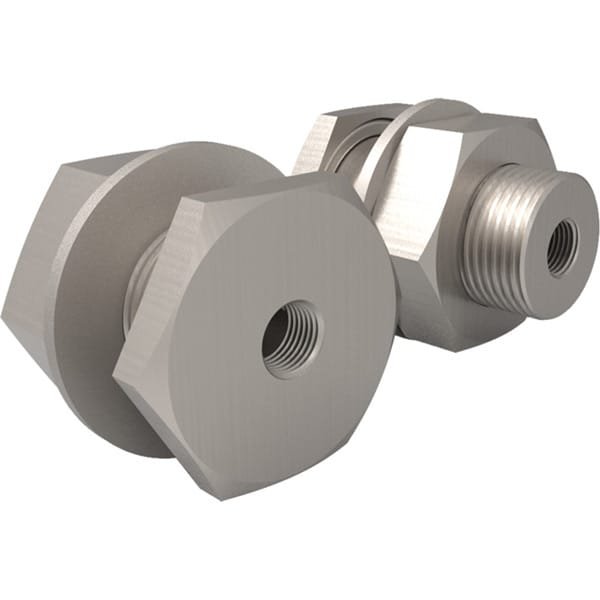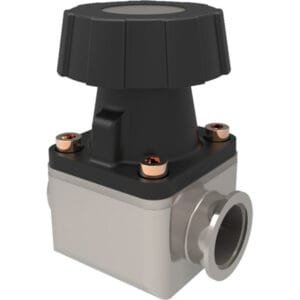Baseplates / NPT Couplings: Secure Vacuum Feedthrough Interfaces for Standard Baseplate Ports
Baseplates / NPT Couplings, offered by TFM, are engineered to enable dependable and modular tube-to-chamber connections through 1″ standard vacuum baseplate ports. Designed for wall thicknesses between 1/4″ and 1-1/4″, these components form an integral part of modern high-vacuum (HV) setups used in scientific, semiconductor, and industrial applications.
TFM’s NPT couplings are mounted directly through the baseplate, with an internal o-ring seal ensuring leak-tight performance. Tubing may be joined to the coupling via either compression o-ring sealing or female NPT threading, allowing system designers flexibility in connection style based on media type, tubing material, or pressure requirements.
In cases where ports are not needed, baseplate plugs provide a reliable way to blank off unused holes. These plugs use an included o-ring and a wing nut mechanism on the atmosphere side to securely compress and seal the port—ideal for modular or reconfigurable vacuum platforms.
Key Features of Baseplates / NPT Couplings:
Wall Compatibility
Designed for use with vacuum walls from 1/4″ to 1-1/4″ thick, fitting most standard chamber wall and baseplate configurations.Vacuum-Tight Mounting
The baseplate NPT coupling installs with its o-ring facing the vacuum side, ensuring a reliable seal for pressures down to ~10⁻⁶ to 10⁻⁷ torr, depending on system integrity and o-ring material.Versatile Tube Connection Methods
– Compression O-Ring Grip: Seals directly around smooth tube ends for low-leak, high-integrity use.
– Female NPT Threads: Compatible with standard threaded pipe fittings for gas or fluid line terminations.Material Options
– Couplings: Manufactured in stainless steel or brass, ensuring chemical and mechanical resistance.
– Plugs: Available in aluminum, brass, or stainless steel, offering flexibility across different vacuum environments.Tool-Free Plug Installation
Wing-nut compression from the external side allows easy sealing of feedthrough ports—no disassembly or welding required.
Applications:
Tube entry points in high-vacuum chamber systems
Modular diagnostics and gas handling ports
Feedthrough sealing in prototype vacuum chambers
Interchangeable port management in R&D setups
Maintenance bypass or purge ports with quick-plug capability
TFM also offers compression fittings, feedthrough coupling plugs, custom baseplate adapters, and elastomeric sealing kits to help build fully integrated vacuum infrastructure.
In summary, Baseplates / NPT Couplings from TFM offer flexibility, reliability, and ease of use for vacuum engineers managing modular or dynamic system requirements. Whether enabling new tube feeds or sealing off unused ports, these components are built for robust performance in demanding HV environments.





Reviews
There are no reviews yet.